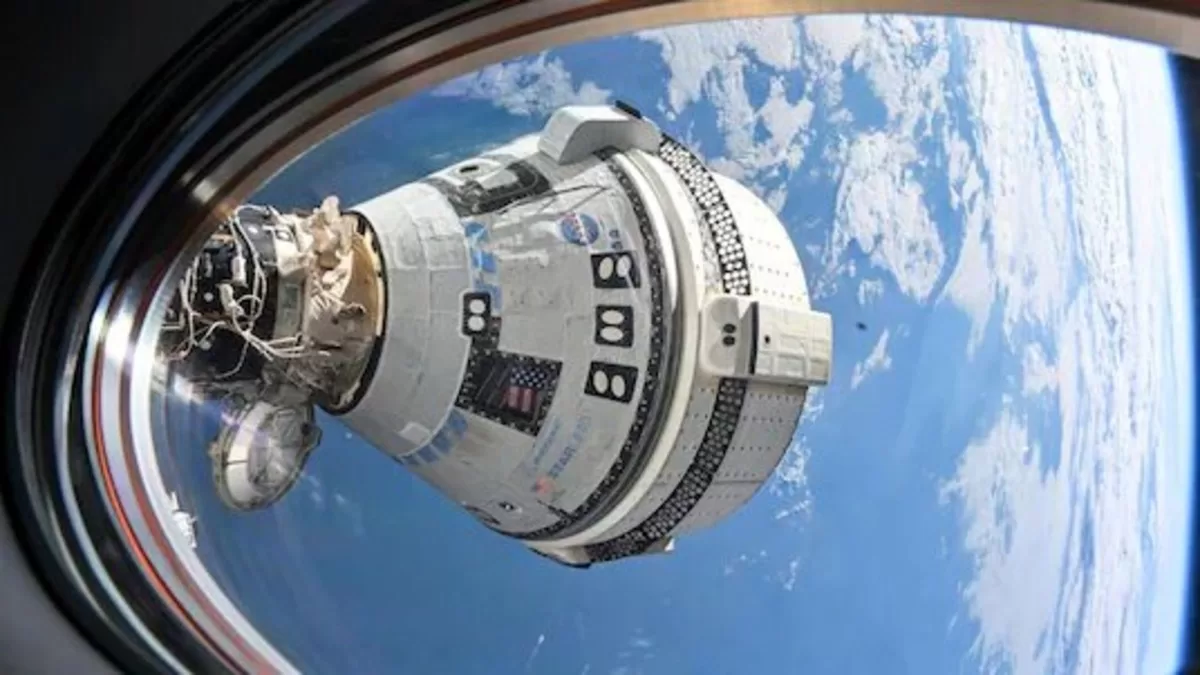Boeing’s Starliner spacecraft, which launched two astronauts to the International Space Station, is seen docked there in July. (NASA/AP)
NASA’s Urgent Mission to Rescue Astronauts Trapped in Space
NASA is in the middle of a challenging and urgent mission to bring home two astronauts who have been stuck aboard the International Space Station (ISS) for almost three months. Sunita Williams and Barry “Butch” Wilmore, both experienced NASA astronauts, found themselves in this unexpected situation due to technical issues with the Boeing Starliner spacecraft they had flown in. What was meant to be an eight-day mission has now turned into an extended stay, and NASA is working around the clock to devise a safe return.
The trouble started on July 5, 2024, when Williams and Wilmore arrived at the ISS. Shortly after docking, the thrusters on the Starliner spacecraft started showing signs of malfunction. It became clear that returning in the same capsule would be impossible, as the faulty thrusters posed a severe risk during re-entry into Earth’s atmosphere. Since then, Boeing and NASA engineers have been tirelessly working to find the cause of the issue, but solutions have been slow to materialize.
The astronauts, meanwhile, have been in relatively good spirits, using their time to contribute to ongoing research at the ISS. But with each passing day, the pressure on NASA and Boeing to bring them home safely is mounting. On August 20, NASA announced that it would extend the astronauts’ stay by eight months and develop a new plan to bring them back using a SpaceX Crew Dragon capsule, a spacecraft that has a proven track record of safely returning astronauts from space.
This decision highlights the complexity of space missions and the inherent risks that come with them. Boeing, one of the biggest players in the space industry, has faced significant scrutiny for the Starliner malfunction. This mission was seen as a crucial test for Boeing’s ability to transport humans to and from space, a market that has become highly competitive with the rise of private companies like SpaceX. The failure has dealt a blow to Boeing’s credibility and raised questions about the future of its involvement in NASA’s space missions.
NASA’s reliance on SpaceX to resolve this issue underscores the growing partnership between the two organizations. SpaceX, led by Elon Musk, has successfully launched numerous crewed missions to the ISS and has become a critical player in NASA’s space exploration goals. The SpaceX Crew Dragon capsule, which will be sent to bring Williams and Wilmore home, is known for its advanced technology and reliability, making it NASA’s go-to choice in this rescue mission.
NASA’s rescue operation is scheduled to take place in March 2025, once the SpaceX Crew Dragon has been prepared and launched. Until then, the astronauts will continue their extended mission at the ISS, assisting with ongoing experiments and preparing for their eventual return. While they are safe and well-supplied, the psychological toll of an extended, unexpected stay in space is always a concern. NASA has made sure to provide them with constant communication with their families and mission control to ensure their well-being during this time.
The incident has sparked debates within the space industry about the risks of space travel and the need for more rigorous testing and safeguards for human missions. While space exploration has made incredible advances in recent years, events like these serve as a reminder of how fragile and dangerous space travel can be. Boeing’s reputation has taken a hit, and the company will need to address the root causes of the Starliner’s thruster issues if it hopes to continue competing in the growing space market.
This mission could have lasting implications for both NASA and Boeing. NASA has a long history of collaborating with private companies, and the success of these partnerships is crucial for the agency’s future exploration plans. Boeing’s setback comes at a time when NASA is looking ahead to missions that will take humans back to the Moon and eventually to Mars, initiatives that will require reliable and safe spacecraft.
For Boeing, this is a critical moment. The Starliner’s failure may delay future crewed missions, potentially giving SpaceX an even larger share of NASA’s contracts. Boeing is under immense pressure to fix the problems and restore its image as a leader in space travel.
NASA’s priority, however, remains the safe return of its astronauts. The agency has made it clear that it will leave no stone unturned in ensuring that Sunita Williams and Barry Wilmore return home safely. The world will be watching closely as NASA and SpaceX collaborate to execute this daring rescue mission, one that could shape the future of space exploration.
#NASAMission #SpaceRescue #AstronautsInSpace #StarlinerIncident #SpaceXRescue
